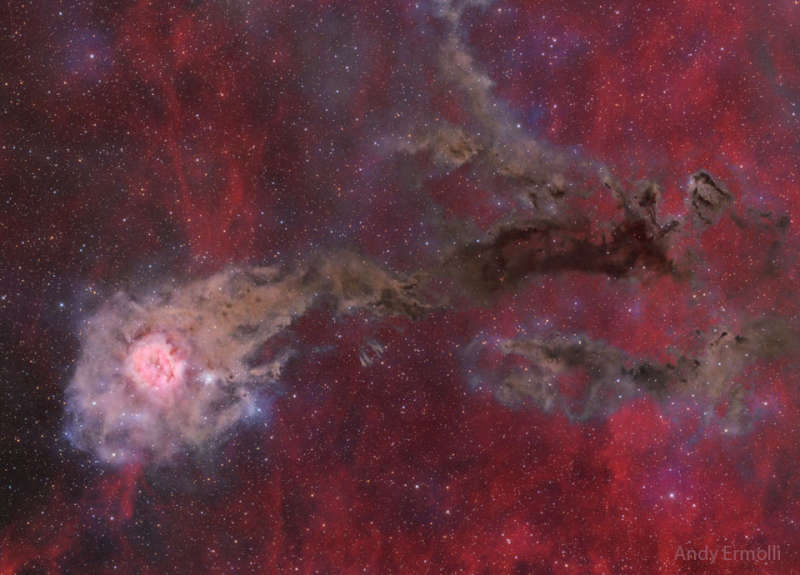
|
Credit & Copyright: Andy Ermolli
Explanation:
When does a nebula look like a comet?
In this crowded
starfield, covering over two degrees within the high flying
constellation of the Swan
(Cygnus),
the eye is drawn to the Cocoon Nebula.
A compact star forming region,
the cosmic Cocoon
punctuates a nebula bright in
emission and
reflection on the left,
with a long trail of interstellar dust clouds to the right, making
the entire complex appear a bit
like a comet.
Cataloged as
IC 5146,
the central bright head of the nebula spans about 10
light years,
while the dark
dusty
tail spans nearly 100 light years.
Both are located about 2,500 light years away.
The bright star near the bright nebula's center, likely
only a few hundred thousand years old,
supplies power to the nebular glow as it helps
clear out
a cavity in the
molecular cloud's star forming dust and gas.
The long dusty filaments of the tail, although dark in this
visible light image,
are themselves hiding stars in the process of
formation, stars that
can be seen at
infrared wavelengths.
|
January February March April May June July August September October November December |
| |||||||||||||||||||||||||||||||||||||||||||||||||||||||
NASA Web Site Statements, Warnings, and Disclaimers
NASA Official: Jay Norris. Specific rights apply.
A service of: LHEA at NASA / GSFC
& Michigan Tech. U.
Based on Astronomy Picture
Of the Day
Publications with keywords: star formation
Publications with words: star formation
See also:
